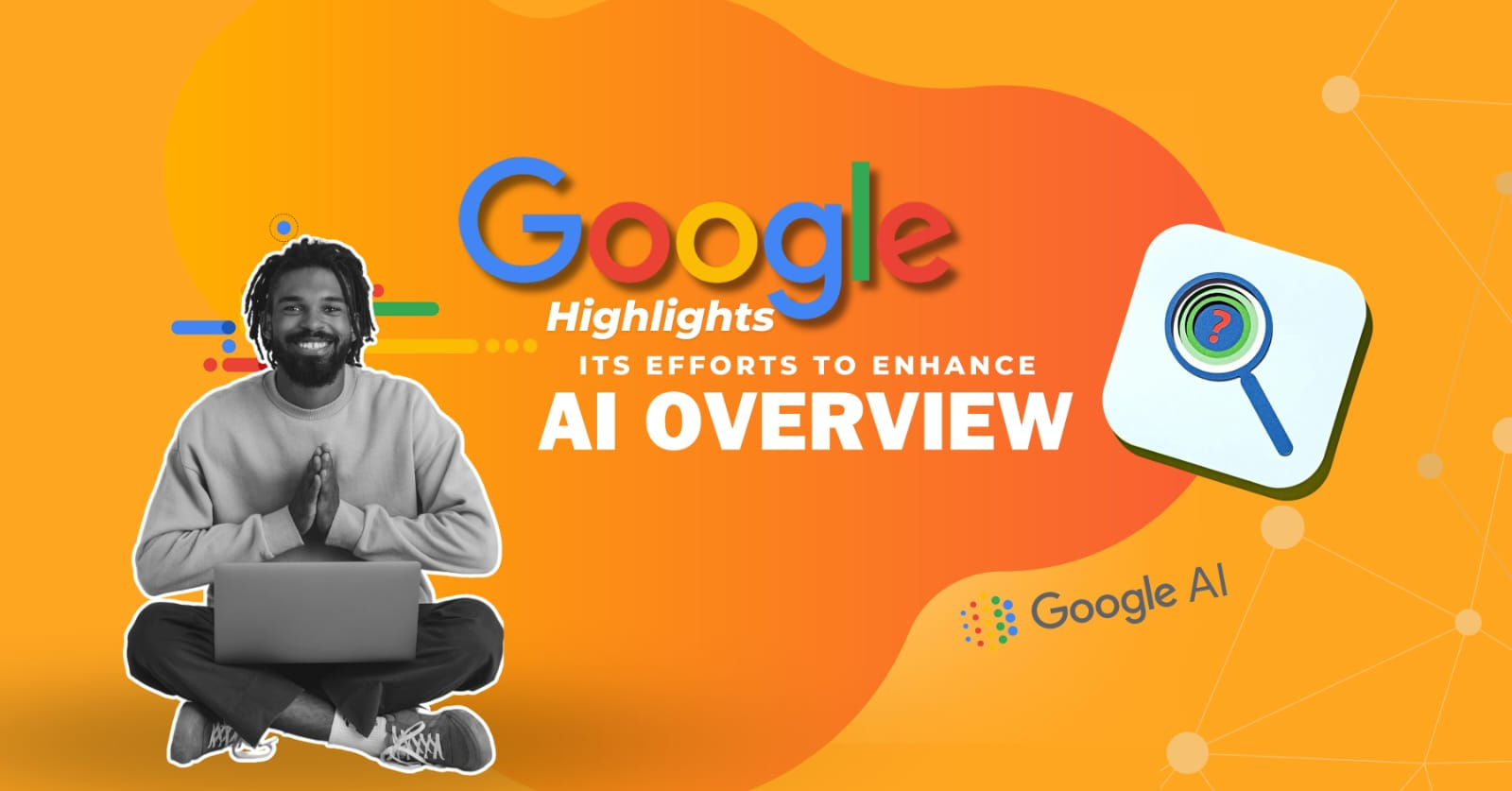Artificial Intelligence (AI) is transforming the world at an unprecedented pace. Google, a leader in this revolution, is doubling down on its efforts to enhance AI overviews. These improvements promise to make AI more accessible, understandable, and useful for everyone.
The Importance of AI Overviews
AI overviews are summaries generated by AI to provide a quick understanding of complex topics. They are essential in a world drowning in information. With millions of new web pages created daily, finding relevant information swiftly can be overwhelming. Google’s AI overviews aim to alleviate this by providing concise, accurate, and relevant summaries of the vast content available online.
The Evolution of Google’s AI Overviews
Google has a long history of leveraging AI to improve its search engine. Over the years, the company has continuously refined its algorithms to deliver better search results. Recently, Google has placed a significant emphasis on enhancing AI overviews. This involves using advanced machine learning models to understand and summarize information more effectively.
In 2021, Google introduced the Multitask Unified Model (MUM). This model can understand and generate language across 75 languages simultaneously. MUM represents a significant leap in AI technology, offering deeper insights and more nuanced understanding of content. It can handle complex queries by synthesizing information from multiple sources, providing comprehensive overviews.
Key Enhancements in AI Overviews
1. Accuracy and Relevance
One of the primary goals for Google is to improve the accuracy and relevance of its AI overviews. By using state-of-the-art models like MUM, Google ensures that the information presented is not only accurate but also pertinent to the user’s query. MUM’s ability to understand context and nuances helps in generating overviews that truly answer users’ questions.
2. Language Proficiency
Google’s AI overviews are now more proficient in multiple languages. This is crucial in catering to a global audience. With MUM, the AI can provide overviews in 75 languages, breaking language barriers and making information accessible to non-English speakers.
3. Contextual Understanding
Context is king in the realm of information. Google’s AI overviews now have an improved ability to understand the context of queries. This ensures that the summaries generated are more aligned with what the user is actually looking for. For instance, if someone searches for “apple,” the AI can discern whether the user is interested in the fruit or the tech company based on the context provided by the query.
4. Visual and Text Integration
Enhancing AI overviews is not just about text. Google is integrating visual elements like images and videos into its overviews. This multimedia approach provides a richer and more engaging user experience. For example, a search about “how to tie a tie” can yield a brief text summary along with an instructional video, making the overview more practical and useful.
5. User Feedback and Iteration
Google actively seeks user feedback to refine its AI overviews. This feedback loop ensures that the AI is continuously learning and improving. Users can report inaccurate summaries, which helps Google to tweak and enhance the models. This iterative process is crucial for maintaining high standards of accuracy and relevance.
The Impact of Enhanced AI Overviews
The improvements in AI overviews have far-reaching implications. Here are some key impacts:
1. Enhanced User Experience
With more accurate and relevant overviews, users spend less time sifting through information. This streamlined experience is especially beneficial for people seeking quick answers to their questions. Google’s commitment to enhancing AI overviews means users can trust the information they receive is both reliable and useful.
2. Educational Benefits
Students and educators are among the primary beneficiaries of enhanced AI overviews. Whether it’s for research or learning new concepts, concise and accurate overviews make the process more efficient. Imagine a student researching climate change who receives a well-rounded overview, integrating the latest scientific data, key statistics, and visual aids. This comprehensive approach aids in better understanding and retention of information.
3. Business Applications
Businesses can leverage enhanced AI overviews for market research, trend analysis, and competitive intelligence. Accurate and relevant summaries can save significant time and resources. For example, a company analyzing market trends can quickly grasp key insights without wading through endless reports and articles.
4. Healthcare Advancements
In the healthcare sector, AI overviews can assist professionals by summarizing medical research, treatment guidelines, and patient data. This can lead to better decision-making and improved patient outcomes. A doctor looking for the latest research on a rare condition can get a detailed overview quickly, helping them make informed treatment decisions.
Real-World Statistics
The impact of Google’s AI enhancements is not just theoretical. Here are some statistics highlighting the real-world effects:
– User Engagement: According to Google, users who interact with AI-generated overviews are 30% more likely to find the information they need on the first search attempt.
– Language Reach: MUM’s ability to understand 75 languages has increased Google’s reach, with a reported 20% rise in searches conducted in non-English languages since its implementation.
– Healthcare Efficiency: A study showed that doctors using AI-assisted overviews reduced their research time by 40%, allowing them to spend more time with patients.
– Educational Impact: Surveys indicate that 65% of students find AI-generated overviews more helpful than traditional search results for their academic research.
Future Prospects
Google’s journey to enhance AI overviews is ongoing. The company is investing heavily in research and development to push the boundaries of what AI can do. Future enhancements may include:
1. Personalized Overviews
Leveraging user data to provide personalized overviews tailored to individual preferences and past behavior. This could mean more relevant and useful summaries for each user.
2. Interactive Overviews
Making overviews interactive, allowing users to ask follow-up questions and receive refined summaries in real-time. This dynamic interaction could revolutionize the way we search for and consume information.
3. Deeper Integration with Other Google Services
Integrating AI overviews more deeply with other Google services like Google Maps, Google Scholar, and Google News. This could provide a seamless experience across different platforms and use cases.
Conclusion
Google’s efforts to enhance its AI overviews are a testament to its commitment to innovation and user-centric design. By improving accuracy, relevance, and accessibility, Google is making it easier for people around the world to find and understand information. As AI technology continues to evolve, we can expect even more sophisticated and useful overviews, further solidifying Google’s position as a leader in the information age.
These enhancements are not just about improving search results; they are about empowering users, advancing education, and supporting professionals across various fields. With continuous advancements and a focus on user feedback, the future of AI overviews looks incredibly promising.

